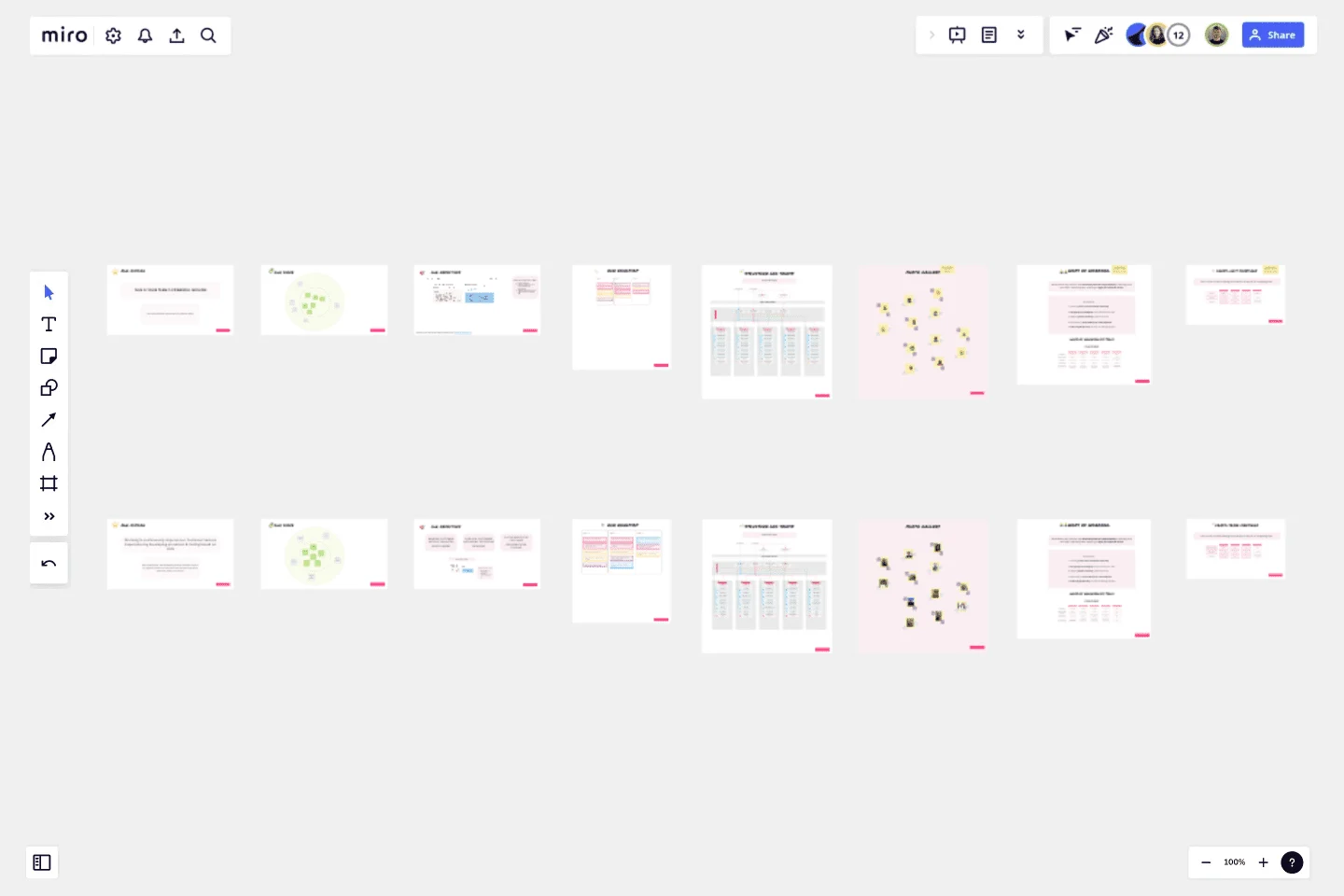Org Unit Visual Guide
This visual guide is especially suitable for large company departments, areas or tribes that need to document what their department does, how they work and who is part of their teams in an engaging and easy way.
The visual guide includes:
A navigation flow that imitates a board game
A template for a Simple Go Roadmap
A template for an Org Chart
A template for a Photo Gallery
A template for a Framework Overview
A Template for Regular Meetings Overview
How to use this template:
Just change anything you need;
Remember to block all the items in the board that you do not want others to edit
To use this template, it is recommended that you know or learn how to use Frames, Hyperlinks and that you know how to embed Google Documents in Miro.
This template was created by Mariana Solana Ros.
Get started with this template right now.
Automated Security Response on AWS Template
Works best for:
AWS
The Automated Security Response on AWS template is a tool for enhancing AWS security through automation, enabling quick identification and mitigation of threats with minimal manual effort. It integrates with AWS security services for a dynamic response mechanism, ensuring infrastructure security against evolving threats. This template streamlines operational efficiency, offers scalable and customizable security strategies, and accelerates threat response times, making it essential for improving AWS security posture.
Meet the Team Template
Works best for:
Documentation, Org Charts, Team Meetings
A Meet the Team page is the best way to introduce each member of the team or organizational leaders. It includes profile pictures and bios with their work experience, achievements, and social media links. The Meet the Team Template helps you design a page that genuinely reflects your team.
User Centric Roadmap
Works best for:
Research & Design
Create user-focused product plans with the Workshop: How to Build a User Centric Roadmap template. This tool helps you prioritize features based on user needs and feedback. Use it to align your team around user-centric goals, ensuring your product development efforts are driven by real user insights. Ideal for product managers and teams looking to enhance their product's user experience and ensure it meets customer expectations effectively.
Multiple-Product Roadmap
Works best for:
Planning, Mapping
The Multiple Product Roadmap template empowers product managers to visualize and manage multiple product initiatives effectively. By providing a centralized view of project timelines, dependencies, and milestones, this template fosters alignment and transparency across teams. With sections for prioritizing initiatives, tracking progress, and communicating updates, it enables teams to coordinate efforts and drive collective success. This template serves as a strategic tool for planning and executing product roadmaps that align with organizational goals and drive business growth.
Architect Organization Canvas
Works best for:
Org Charts, Operations, Mapping
The architecture organization canvas is a kind of business capability card specifically tailored to understanding and improving the architecture capability of an organization.
T-Chart Template
Works best for:
Ideation, Operations, Strategic Planning
T-Charts can help you compare and contrast two different ideas, group information into different categories, and prove a change through “before” and “after” analysis. T-Charts are visual organizational tools that enable you to compare ideas, so you can evaluate pros and cons, facts and opinions, strengths and weaknesses, or big-picture views versus specific details. Designers and content creators can use T-Charts to turn possibilities into actionable ideas. T-Charts are useful for discussing differences and similarities with your team or clients and can help you to reach a decision together.
